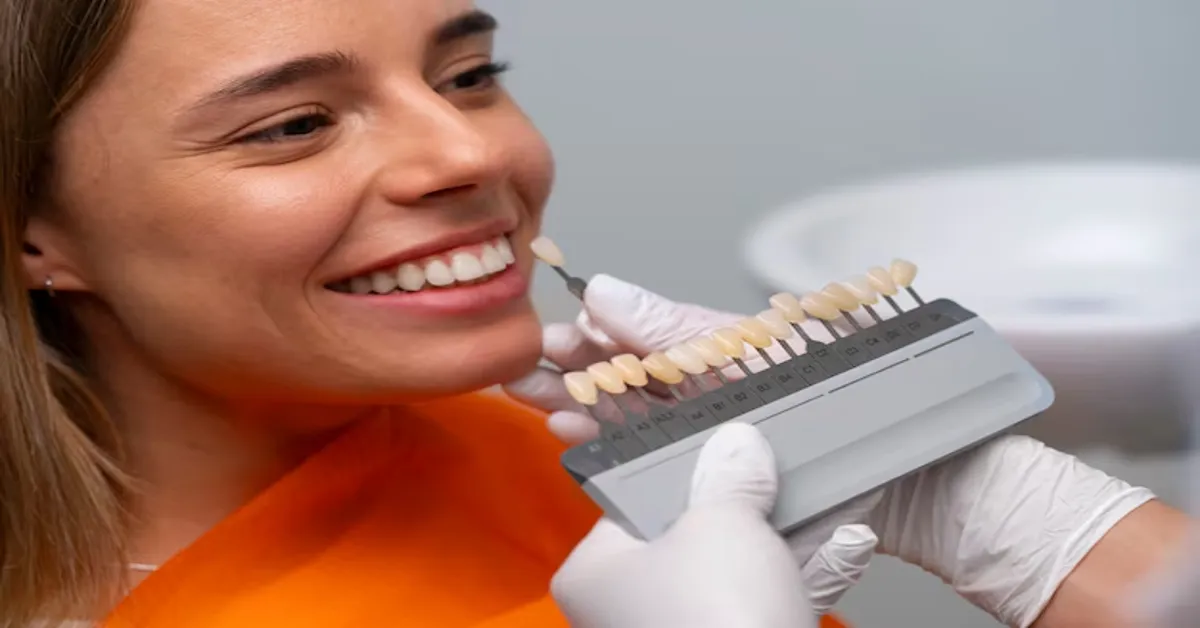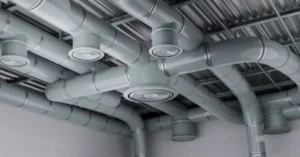A radiant smile can light up a room and boost your confidence. If you’re dreaming of that perfect grin, dental veneers might be the answer you’ve been searching for. These thin shells transform imperfect teeth into stunningly beautiful smiles. But before you take the plunge, it’s essential to understand how much they truly cost and what factors influence pricing.
Budgeting for veneers isn’t just about the initial expense; it involves understanding various elements like types of veneers, maintenance costs, and potential financing options. This guide will break down everything you need to know about dental veneers cost so you can make an informed decision on your path to achieving that dream smile. Let’s dive in!
Understanding Dental Veneers
Dental veneers are cosmetic enhancements that cover the front surface of teeth to improve their appearance. They’re typically made from porcelain or resin composite materials, offering a natural look while enhancing strength. These shells can address various dental imperfections like discoloration, chips, gaps, and misalignment.
The procedure for getting veneers involves minimal tooth preparation. Your dentist will carefully reshape the affected teeth to ensure a snug fit for the veneers. This process is often quick and may require just a few visits to complete.
One of the appealing aspects of veneers is their versatility. Whether you want to change the shade of your teeth or create a more uniform smile, they can be customized to match your desired aesthetic perfectly.
While veneers provide instant results and significantly boost confidence, it’s essential to remember that they also require proper maintenance and care over time. Regular dental check-ups will help keep them in top shape while ensuring optimal oral health.
Different Types of Dental Veneers
Dental veneers come in several types, each offering unique benefits. Porcelain veneers are among the most popular options. They mimic the natural appearance of teeth and resist staining well. Their durability makes them a favored choice for those looking to enhance their smiles.
Composite resin veneers provide a more budget-friendly alternative. These are made from tooth-colored materials that can be sculpted directly onto your teeth during an office visit. While they may not last as long as porcelain, they offer great aesthetic results with quicker turnaround times.
Lumineers are another type worth considering. They’re ultra-thin and require minimal preparation of the tooth surface compared to traditional dental veneers. This option is ideal for individuals who want to avoid significant enamel removal while still achieving a radiant smile.
There’s the option of no-prep or minimal-prep veneers that preserve more of your natural tooth structure than conventional methods do. Each type has its advantages depending on individual needs and preferences, making it essential to discuss these options with your cosmetic dentist before deciding which suits you best.
Factors Affecting the Cost of Veneers
Several factors influence the cost of dental veneers, starting with the type you choose. Porcelain veneers tend to be more expensive than composite ones due to their durability and natural appearance. The materials used in crafting these dental veneers can significantly impact pricing.
Another key factor is your location. Dental practices in urban areas often charge higher rates compared to those in smaller towns or rural settings. This geographic variation can lead to noticeable differences in overall costs.
The expertise and reputation of your cosmetic dentist also play a role. Highly skilled dentists with extensive experience may charge more for their services, but this investment often leads to better results and satisfaction.
The number of teeth being treated can affect total expenses. If you’re considering multiple veneers instead of just one or two, some dentists offer package deals that might ease the financial burden while ensuring an even smile transformation across your mouth.
Insurance Coverage and Financing for Veneers
Dental veneers can be a significant investment, and understanding insurance coverage is crucial for many patients. Most dental insurance plans view veneers as a cosmetic procedure, which means they typically don’t cover the full cost. However, some plans may offer partial coverage if there are underlying dental issues that need addressing.
Financing options are often available to help manage the out-of-pocket expenses associated with dental veneers. Many dental practices provide payment plans or work with third-party financing companies that allow you to break down costs into manageable monthly payments. This flexibility makes it easier for patients to achieve their dream smiles without financial strain.
Additionally, Health Savings Accounts (HSAs) and Flexible Spending Accounts (FSAs) can be useful tools for budgeting your veneer costs. These accounts let you use pre-tax dollars for qualified medical expenses, including certain cosmetic procedures like dental veneers.
Before moving forward with treatment, discussing all available options with your dentist’s office is essential. They can guide you through any potential financial assistance programs or payment arrangements tailored to fit your needs.
Lifespan and Maintenance of Veneers
Dental veneers are designed to be durable, often lasting between 10 to 15 years with proper care. Their longevity largely depends on the material used and your oral hygiene habits. Porcelain veneers tend to outlast composite ones due to their strength and resistance to staining.
Maintaining your veneers is straightforward but essential for long-term success. Regular brushing and flossing should remain a priority in your daily routine. Using a non-abrasive toothpaste can help prevent scratches that may dull their appearance over time.
Routine dental check-ups play a crucial role too. Your dentist will assess the condition of your veneers during these visits, ensuring they remain intact and addressing any issues before they escalate. This proactive approach can save you money down the line.
Avoiding certain foods can also extend the life of your veneers. Hard candies or ice can pose risks by causing chips or cracks, while dark beverages like coffee may stain them if not cared for properly. Maintaining awareness about what you consume helps keep your smile looking pristine longer.
Choosing the Right Cosmetic Dentist
Selecting the right cosmetic dentist is crucial for achieving your dream smile. Start by researching professionals in your area. Look for dentists who specialize in dental veneers and have strong portfolios showcasing their work. Online reviews can provide insight into patient experiences, helping you make an informed choice.
Consider scheduling consultations with a few candidates to gauge their expertise and approach. During these meetings, ask about their training and experience specifically related to veneer placements. A skilled cosmetic dentist should be able to answer your questions confidently and demonstrate a clear understanding of your needs.
Pay attention to the office environment as well. A welcoming atmosphere often reflects professionalism and quality care. The use of modern technology can also indicate that the practice stays updated with advancements in dental procedures.
Communication plays a vital role in building trust between you and your dentist. You want someone who listens actively, addresses concerns respectfully, and provides personalized treatment options based on your unique goals for enhancing your smile.
Steps to Getting Veneers
Getting veneers involves a series of straightforward steps that bring you closer to your ideal smile. The journey usually begins with an initial consultation. Here, you’ll discuss your dental goals and preferences with your cosmetic dentist. It’s the perfect time to ask questions about the process and express any concerns.
Next comes the treatment plan phase. Your dentist will take impressions of your teeth, ensuring that your veneers are custom-made for a perfect fit. Digital imaging may also be used to give you a preview of how your new smile will look. This step is crucial for creating a personalized design that meets your expectations.
Once everything is set, it’s time for tooth preparation. This involves removing a small amount of enamel from the front surface of each tooth receiving veneers, allowing them to bond securely without appearing bulky or unnatural. Afterward, temporary veneers may be placed while you wait for the final product.
When your custom veneers arrive from the lab, they’ll be fitted and bonded to your teeth permanently. Adjustments can be made at this stage if necessary before sealing them in place for long-lasting results.
Benefits of Veneers Investment
Investing in dental veneers can transform your smile and boost your confidence. The aesthetic appeal they offer is undeniable; veneers can effectively conceal imperfections, resulting in a flawless appearance. This enhancement isn’t just about looks—it has psychological benefits too. Many people report feeling more self-assured after getting veneers, allowing them to engage socially without worrying about their teeth.
Financially, while the initial cost may seem steep, consider it a long-term investment in yourself. Veneers are durable and resistant to stains, meaning you’ll likely save on future dental treatments or cosmetic procedures down the line. Plus, quality craftsmanship from a skilled dentist ensures that you get lasting results.
Moreover, maintaining veneers is often simpler than caring for natural teeth with various issues. Regular brushing and flossing combined with professional cleanings will keep your smile radiant for years to come.
The advantages of having a beautiful smile extend beyond aesthetics—they enrich your life by enhancing your personal and professional relationships as well as improving overall happiness.









